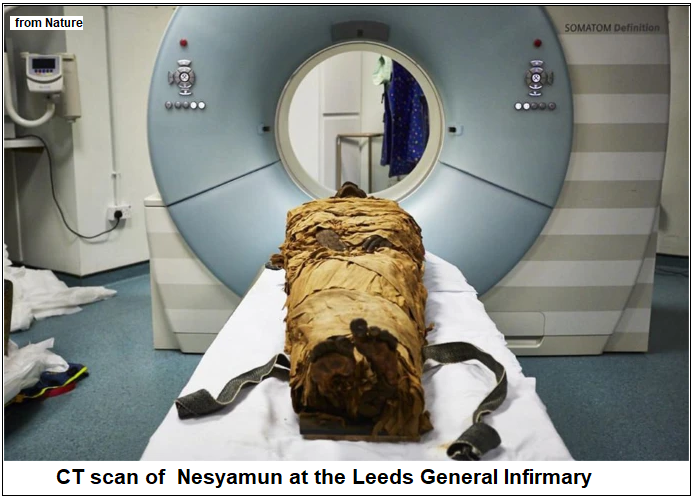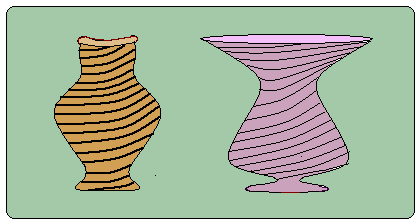An Egyptian mummy breaks the silence, says S.Ananthanarayanan.
As images can be captured, prehistory can be brought visually to life. Cave art is a clear instance. Of sounds, however, this is not true. Recording became possible only in the 19th Century, and we have no evidence of earlier sounds. Would ancient times appear more real if we could hear what those times sounded like?
D. M. Howard, J. Schofeld, J. Fletcher, K. Baxter, G. R. Iball and S.A. Buckley, from the universities of London, York and Tübingen, Germany, Leeds Museums and Galleries and the Old Medical School, Leeds, describe in the journal, Scientific Reports, how they reconstructed the voice box of an Egyptian who lived 3,000 years ago. And then synthesised his voice. In some sense, the team has brought an Egyptian mummy back to life, to make out how the person spoke at least one syllable.
A person’s voice is considered to be as unique as her fingerprints. A feature can be unique when it arises through the interplay of a great many, generally random factors, whose combination tends never to be repeated. Fingerprints are an example, because no two babies can share the physical conditions all through their time in the womb, which is when the patterns on the fingertips are formed. In the same way, each tone of person’s voice consists of a mix of several frequencies. These frequencies arise in the voice box, or larynx, an organ in the neck, which also enables breathing and swallowing. And the mix of frequencies that come out of the voice box is sensitive to the slightest differences in the dimensions. As the voice box is built up of millions of cells, each voice box is a little different, and each person has a different voice, like different fingerprints. The human ear can make out the difference, we may have noticed that we can usually identify a person who calls on the phone as soon as we hear them say, “hello”.
The paper says that if the exact dimensions of a person’s vocal tract are established, current technology is able to reconstruct the vocal tract, and the person’s vocal sound can be synthesised using electronics. This has been done with the larynx of living persons and the synthesised sound matched with the real voice. The exercise, however, has been done with living persons, where the soft tissue around the bones of the neck are there for use as the model for building the voice box - the precise shape is not available when what remains is only the skeleton. Even when a body is embalmed and tissue is preserved, the vocal tract is missing or distorted, the paper says.
There are, however, instances of better preserved mummies, where the technology that we now possess could possibly be successful. A project, ‘Voices from the past’, was hence set up to see what could be done with best-preserved bodies of antiquity. And one such, the paper says, is that of Nesyamun, a priest, incense-bearer and scribe at the Egyptian temple complex at Karnak in the ancient Greek city of Thebes. The body, which lies in the Leeds City Museum, is dated at about 1100 BCE and was unwrapped in 1824. And over the years since then, there have been several rounds of examination, including x-ray studies and the earlier forms of CT scan.
It was in 2016 that the mummy was moved from the museum to the well-equipped CT scan department of the Leeds General Infirmary. CT scan produces a series of x-ray images of slices of the tissue being examined, and with the help of a computer, the images can be combined to create a 3-D representation. There are then computer-controlled methods of building a physical object, to create a model, in this case of the larynx of the 3,000-year-old, brittle, fragile mummy. The soft tissue of the vocal tract of the Nesyamun mummy is essentially intact, the paper says, and could be modelled exactly, and the shape of the tongue and soft palate was estimated.

The result is a model of the ancient larynx, and the team was able to synthesise how one syllable spoken by the owner would have sounded. As the shape of the voice box is fixed, frozen, there is no way running speech can be synthesised, and It is just one syllable, a single sound. But it is a sound that was heard when Nesyamun, a person of importance in the politically volatile reign of pharaoh Ramses XI (c.1099–1069 BC) lived and spoke at the temple at Thebes, some 50 km from modern Athens. Playing back this single syllable when visitors view the remains in the museum, or visit the ruins at Thebes, is sure to enrich the experience.
Another instance of reproduction of voices from the distant past was reported over 20 years ago. This was when Landry and M’batu, scientist-archaeologists, reverse-engineered ancient Cretan pottery to recover samples of speech of the prehistoric potters. Cretan pots, dated about 3,800 years ago, are decorated with a spiral groove that goes many times around, as if made by spinning the pots when still soft, with a metal stylus sliding down the side. Landry and M’batu said that if the Cretan potters were speaking while they did their work, the stylus would have vibrated with the speech, and would have recorded the sounds in the patterns on the pottery. It would be like how phonograph records are made. As the Cretan pots were glazed, any such traces would be perfectly preserved. Micro-analysis of the grooves with “molecular mapping” has now shown that there were indeed some regular patterns in those grooves. And with a consistent pattern discovered in several pots, it appears that the Cretan potters chanted a standard drone, perhaps a prayer, when the pots were being decorated.

Given a pattern in the engravings, researchers were able to make provision for variations in the speed of rotation of the pots and decode some of the sounds. This was a reconstruction of Cretan speech, and comparison with information about Sino-Tibetan and other origins of language is said to have shown similarities. Although this assertion is controversial, the discovery was an exciting first instance of recovery of sounds from antiquity.
Crete is an island just south of Greece and less than 500 km from Thebes. The work on the mummy from Thebes is thus the second instance where we hear a sound that has its origin 3,000 and more years ago.
------------------------------------------------------------------------------------------ Do respond to : response@simplescience.in-------------------------------------------